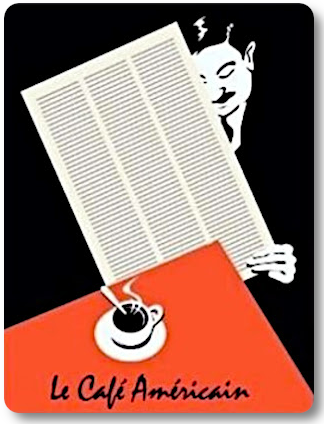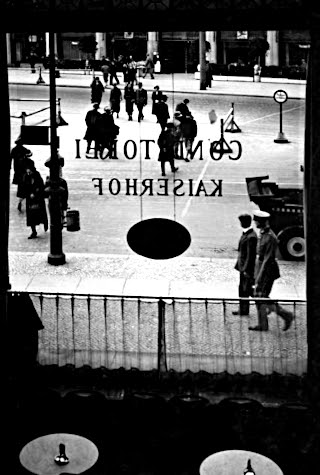More on the inflation v. deflation debate. There is a divergence among the pros as you can see from this article in Bloomberg which is worth reading.
Our 'model' is deflation now, at least in prices, with a nasty inflation of probably double digits at least to follow.
There is little advantage in trying to anticipate the progression of these events unless you are looking at the slow accumulation of precious metals and key investments with very long time horizons. Timing will be difficult until things become obvious, which leaves sufficient time to move among relatively liquid assets.
The Fed will be slow to drain, and it is not unlikely that we could see short term rates spike up to 15 to 20 percent with much of the longer yield curve at 12+%. The Fed will feel the need to crush a burgeoning inflationary cycle, especially if there are any exogenous shocks in key commodities.
That will set up a once-more-in-our-lifetime buying opportunity in zero coupons and annuitiies, and very high quality dividend paying utilities with DRIPS. We made that play in the early 1980's and it was a long term winner.
You now have our investment gameplan for what is likely to be the rest of Jesse's life. Let's see how it plays out and allow the market to inform us of the timing, and surprise twists. We see little advantage in anticipating these markets and the preservation of capital is paramount.
Bloomberg
Treasury Real Yield at 16-Month High on Inflation Bet
By Dakin Campbell
Feb. 2 (Bloomberg) -- For the first time since 2007, Treasury investors are betting that inflation will accelerate.
The yield on 10-year notes exceeds the consumer price index by 2.72 percentage points, the most since December 2006. The gap between two- and 10-year rates widened at the fastest pace in a year last month as traders demanded more compensation for longer-term debt. Treasury Inflation Protected Securities that signaled falling prices as recently as Nov. 20 show they will increase in the U.S. this year.
Deflation was the growing concern for investors in 2008 as government bond yields fell to historic lows in December, the Reuters/Jefferies CRB Index of commodities tumbled 53 percent since July and home prices plunged 18 percent amid a deepening recession. Now, the bond market is saying Federal Reserve interest rates at zero percent, President Barack Obama’s $819 billion planned stimulus package and $8.5 trillion of U.S. initiatives to revive credit markets will reignite inflation.
“When the Fed gets finished here they will have an inflation nightmare on their hands,” said Mark MacQueen, who helps oversee $7 billion as co-founder of Sage Advisor Services Ltd. in Austin, Texas. “There is a lot of downside in conservative government bonds.”
MacQueen is selling 30-year Treasuries, which are more sensitive to inflation expectations than shorter-maturity debt.
Rising Yields
The yield on 30-year Treasury bonds climbed 29 basis points, or 0.29 percentage point, to 3.61 percent last week, according to BGCantor Market Data. The price of the 4.5 percent security due in May 2038 declined 5 29/32, or $59.06 per $1,000 face amount, to 116 2/32. For the month, the yield rose 93 basis points, the most since climbing 100 basis points in April 1981.
The yield fell three basis points to 3.57 percent at 8:08 a.m. in New York.
Yields are rising so fast they are already higher than where economists just three weeks ago expected they’d be at year-end. The median estimate of 44 economists, investors and strategists surveyed by Bloomberg News from Jan. 5 to Jan. 12 was for 3.45 percent by 2010.
Investors in 30-year bonds lost 14.6 percent last month, according to Merrill Lynch & Co. index data. January was the worst month for government securities since Merrill Lynch began tracking returns on the securities in 1988. (That was a drop from a record spike high however - Jesse)
Yields on 10-year notes fell to the lowest on record in December as the cost of living dropped 0.7 percent, trimming the annual advance to 0.1 percent, the smallest rise in half a century, according to the Labor Department in Washington.
Crude Oil
Consumer prices fell as crude oil dropped 78 percent to $32.40 a barrel on Dec. 19 after rising to a record $147.27 in July. House prices in 20 cities plunged by more than 18 percent in November from a year earlier, according to the S&P/Case- Shiller index.
At the current sales rate, it would take a record 12.9 months to absorb all the unsold homes on the market. That’s more than twice as much as the five to six months that the National Association of Realtors in Washington says is consistent with a stable market.
“We are in the midst of a deflationary freefall,” said John Brynjolfsson, the chief investment officer at hedge fund Armored Wolf LLC in Aliso Viejo, California. “I don’t anticipate there is anything the Fed can do to prevent that from continuing for the next six to 12 months.”
So-called real yields that measure the difference between Treasuries and the inflation rate turned negative in November 2007 and stayed there until October, dropping as low as negative 1.79 percent in August.
Real Yields
Except for one month in 2005, the last time real yields were negative was 1980, when the Fed raised interest rates to 20 percent to fight inflation that exceeded 14 percent. During that time, real yields were below zero for 23 of 24 months ending December 1980. (The Fed will do this at some point AFTER inflation has become apparent. There will be a significant opportunity to lock in high yields on annuitites, utilities with DRIPS, and the purchase of zero coupons. But that is some years away. It sticks in my mind because I made my parents retirement very comfortable using this strategy in 1980. Timing wil be important.- Jesse)
Policy makers led by Chairman Ben S. Bernanke cut the target rate for overnight loans between banks to a range of zero to 0.25 percent in December to revive lending and stem deflation. Obama’s stimulus plan passed the U.S. House Jan. 28 and went to the Senate for approval.
The current real yield is in line with the average 2.71 percentage points in the past 20 years, showing investors see an increasing threat in inflation. By the fourth quarter, consumer prices will accelerate at a 1.75 percent annual rate, according to the median estimate of 56 economists surveyed by Bloomberg.
Yield Curve
The difference in rates on two- and 10-year notes, known as the yield curve, has steepened from a six-month low of 125 basis points on Dec. 26 to 189 basis points on Jan. 30. That’s more than double the average of 91 basis points over the last two decades. Investors usually demand more compensation on longer- maturity debt when inflation is accelerating, causing the curve to steepen.
“We see the Fed and all the policy action gaining traction and reflating the economy,” said Mihir Worah, who oversees $65 billion in inflation-linked securities for Newport Beach, California-based Pacific Investment Management Co., the manager of the world’s biggest bond fund.
Treasury Inflation Protected Securities, or TIPS, due in 10 years yield 1 percentage point less than notes that aren’t linked to consumer prices. The so-called break-even rate, which reflects traders’ outlook for consumer prices, is up from negative 0.08 percent on Nov. 20.
TIPS pay interest on a principal amount that rises with the Labor Department’s consumer price index. TIPS ended last week at 103 13/32 to yield 1.75 percent.
Inflation concerns are also rising outside the U.S. Charteris Portfolio Managers bought inflation-protected bonds for the first time for its top-performing U.K. gilt fund.
Fed Assets
The City Financial Strategic Gilt Fund started investing in index-linked bonds in November and now holds 65 percent of its assets in the securities, Ian Williams, chief executive officer of Charteris, said in an interview last week in London.
“Government attempts to reflate the economy, especially in the U.S., will ultimately work,” Williams said. “It’s too pessimistic a view to see all this money being pumped into the system and still assume it’s all going to fail.”
The Fed’s assets have grown by $1 trillion over the past year under credit programs ranging from $416 billion in term loans to banks to purchases of $350 billion in commercial paper issued by U.S. corporations. Cash that banks can lend to consumers and business, known as excess reserves, rose to almost $844 billion in the week ended Jan. 14, central bank data shows.
Debt Sales
“We are already seeing a huge expansion of the Fed balance sheet and the multipliers that are implicit there are extraordinary,” said Brynjolfsson at Armored Wolf. “Double- digit inflation is not out of the question in the following decade.”
The corporate bond market offers one sign that the efforts by the Fed to unfreeze credit markets may be working. Companies sold $138 billion of debt last month in the U.S., the most since May, according to data compiled by Bloomberg.
Fed officials suggested that prices are increasing too slowly at last week’s meeting of the Federal Open Market Committee. “The committee sees some risk that inflation could persist for a time below rates that best foster economic growth and price stability in the longer term,” the FOMC said in a Jan. 28 statement.
“The Fed and Treasury will do whatever they can to get the economy going and that is ultimately what will stop deflation,” said Ethan Harris, co-head of U.S. economic research at Barclays Capital Inc. in New York. “It’s clear they will keep their foot on the accelerator until you get real growth.”
02 February 2009
Inflation v. Deflation and the Yield Curve: Jesse's Lifetime Trading Plan
01 February 2009
Corruption as an Element in the Financial Crisis
The only surprising thing about this essay is that it appears in Forbes.
After the demise of Glass-Steagall the gloves came off and corruption became an unusually prominent factor in our financial system. There should be little doubt that the taint reached the highest levels in the US over the past ten years or more, and is still a serious problem.
Forbes
Corruption And The Global Financial Crisis
Daniel Kaufmann
01.27.09, 02:58 PM EST
The financial debacle has many causes and implications, but it would be wrong to underestimate systemic corruption.
It would be very convenient to start this article by stating that corruption is a challenge mainly for public officials in developing countries and that it is unrelated to the current global crisis.
I also wish I could claim that corruption has declined worldwide as a result of the global anti-corruption and awareness-raising campaign, the many effective anti-corruption commissions, and the recognition that poverty and culture are the reasons why corruption prevails.
But none of it is true. For starters, corruption is not unique to developing countries, nor has it declined on average. Some developing countries, such as Chile and Botswana, exhibit lower levels of corruption than some fully industrialized nations. And countries like Colombia and Liberia have made gains in recent years, while others, such as Zimbabwe, have deteriorated. Bribery remains rife in many countries, totaling about $1 trillion globally every year.
In truth, anti corruption commissions, revised laws and awareness-raising campaigns have had limited success. Focus on petty or administrative bribery has been misplaced at the expense of high-level political corruption.
One neglected dimension of political corruption is "state capture," or just "capture." In this scenario, powerful companies (or individuals) bend the regulatory, policy and legal institutions of the nation for their private benefit. This is typically done through high-level bribery, lobbying or influence peddling.
The cost to society of bribing a bureaucrat to obtain a permit to operate a small firm pales in comparison with, say, a telecommunications conglomerate that corrupts a politician to shape the rules of the game granting it monopolistic rights, or an investment bank influencing the regulatory and oversight regime governing them.
As a country becomes industrialized, its governance and corruption challenges do not disappear. They simply morph and become more sophisticated: Transfer of a briefcase stashed with cash is less frequent.
Instead, subtler forms of capture and "legal corruption" exist: an expectation of a future job for a regulator in a lobbying firm, or a campaign contribution with strings attached. In many countries this may be legal, even if unethical. In industrialized nations undue influence is often legally exercised by powerful private interests, which in turn influence the nation's regulations, policies and laws.
This has dire consequences: Witness the various forms of corruption underlying the current global financial crisis that started in the U.S.
There are multiple causes of the financial crisis. But we can not ignore the element of "capture" in the systemic failures of oversight, regulation and disclosure in the financial sector. Concrete examples abound...
(The examples given are Fannie Freddie, AIG, the mortgage lenders, and the Investment Banks)
The new U.S. administration has stated its intention to address the challenges of transparency and accountability in its stimulus plan. The devil will be in the details. Merely creating an oversight institution will not do; system-wide reforms in incentives are required. Deep-seated transparency reforms need to be a cornerstone in the government's plan, and should apply to U.S. public agencies as well as domestic and international financial institutions. Regulations supporting effective disclosure, as well as improved audit, accounting and risk-rating standards, should be preferred to restrictive regulatory controls that block innovation and growth.
Humbly learning from other nations will also go a long way. The situation in the U.S. warrants studying other countries--for instance, Sweden and Chile, which successfully addressed their financial crises long ago. Chile also offers guidance on how to structure less corrupt and effective concessions in infrastructure, where the U.S. is a novice.
In order to restore confidence, citizens, entrepreneurs and bankers need to have renewed trust in the financial system. That way they can be persuaded that it is no longer a giant Ponzi scheme. Transparency is the key.
The Banks Are Making an Offer They Think that the People Cannot Refuse
Better we tie off the bleeding wound now, nationalize the banks, and start again with an honest financial system, than pay one more cent of blackmail tribute to this den of thieves.
They would use our own money to buy us.
Bloomberg
Stiglitz Criticizes Bad Bank Plan as Swapping ‘Cash for Trash’
By Simon Kennedy
Feb. 1 (Bloomberg) -- Nobel laureate Joseph Stiglitz said any decision by President Barack Obama to establish a so-called bad bank to rid financial companies of toxic assets risks swelling the national debt.
Obama’s administration is moving closer to buying the illiquid assets currently clogging bank’s balance sheets and preventing them from boosting lending, people familiar with the matter said this week.
That amounts to swapping taxpayers’ “cash for trash,” Stiglitz said yesterday in a panel discussion at the World Economic Forum in Davos, Switzerland. “You shouldn’t chase good money after bad. We’re talking about a national debt that’s very hard to manage.”
Stiglitz, a professor at Columbia University in New York and a former adviser to President Bill Clinton, says the plan would leave taxpayers paying for years of excess lending by banks. It would also deprive the government of money that would have been better spent shoring up Social Security, he said.
Whether a bad bank would accelerate an end to the financial crisis split delegates attending the Davos talks. JPMorgan Chase & Co. Chief Executive Officer Jamie Dimon said such an operation would help if “executed well.” Billionaire investor George Soros said in an interview that “it’s not the measure that would turn the situation around and enable banks to lend.”
Obama Plan
Obama said yesterday he’s readying a plan to unlock credit markets and lower mortgage rates. Under the initiative, the government would buy some tainted securities and insure the banks against losses on the rest.
“Soon my Treasury secretary, Timothy Geithner, will announce a new strategy for reviving our financial system that gets credit flowing to businesses and families,” Obama said in his weekly radio address.
Stiglitz drew criticism from panel participant Angel Gurria, head of the Organization for Economic Cooperation and Development, who says a bad bank is necessary for lending to resume.
“I agree about the moral, ethical fallout, but you’ve got to face the music and someone has to take the loss,” said Gurria, Mexico’s former finance minister. “It’s the only way to jumpstart the economy.” (Blackmail. Injustice. Infamy - Jesse)
Bank losses worldwide from toxic U.S.-originated assets may double to $2.2 trillion, the International Monetary Fund said in a report released Jan. 28.
John Monks, general secretary of the European Trade Union Confederation, told the same audience that governments are getting “close to straining the patience of the public and voters” by repeatedly extending lifelines to banks.
Philippines President Gloria Arroyo urged Obama to make a quick decision on his plan.
“We want Americans to do something,” she said at the session, which was called “Rebooting the Global Economy.” “We can discuss what to do but the worst thing is to do nothing.”
US Financial Rescue Plan Delayed to Second Week in February
 Did Turbo Tim misplace "The Plan?"
Did Turbo Tim misplace "The Plan?"
Check Hank's locker. Zimbabwe Ben has a copy.
Or are they just giving the frat boys some extra time to 'arrange their affairs?'
Economic Times
US financial rescue plan delayed a week: Report
1 Feb 2009, 0639 hrs IST
WASHINGTON: The announcement of President Barack Obama's financial rescue plan will be pushed back a week to the second week of February, media reported on Saturday, citing administration sources.
"Administration aides are saying that they want to get the details right, that there are a lot of moving pieces, and so it's going to take an extra week," a news channel said. Administration officials are weighing elements to include in the plan, including whether to restrict executive compensation, how to get credit markets flowing and how to deal with the foreclosure crisis, channel said.
Efforts to get the first installment of the $700 billion bailout initiative were rushed, resulting in difficulties, and the Obama administration believes that "getting these details right might make sense," channel said.
President Barack Obama said earlier in the day the plan would be announced soon and would help lower mortgage costs for homeowners and spur the flow of credit to businesses and households.






























